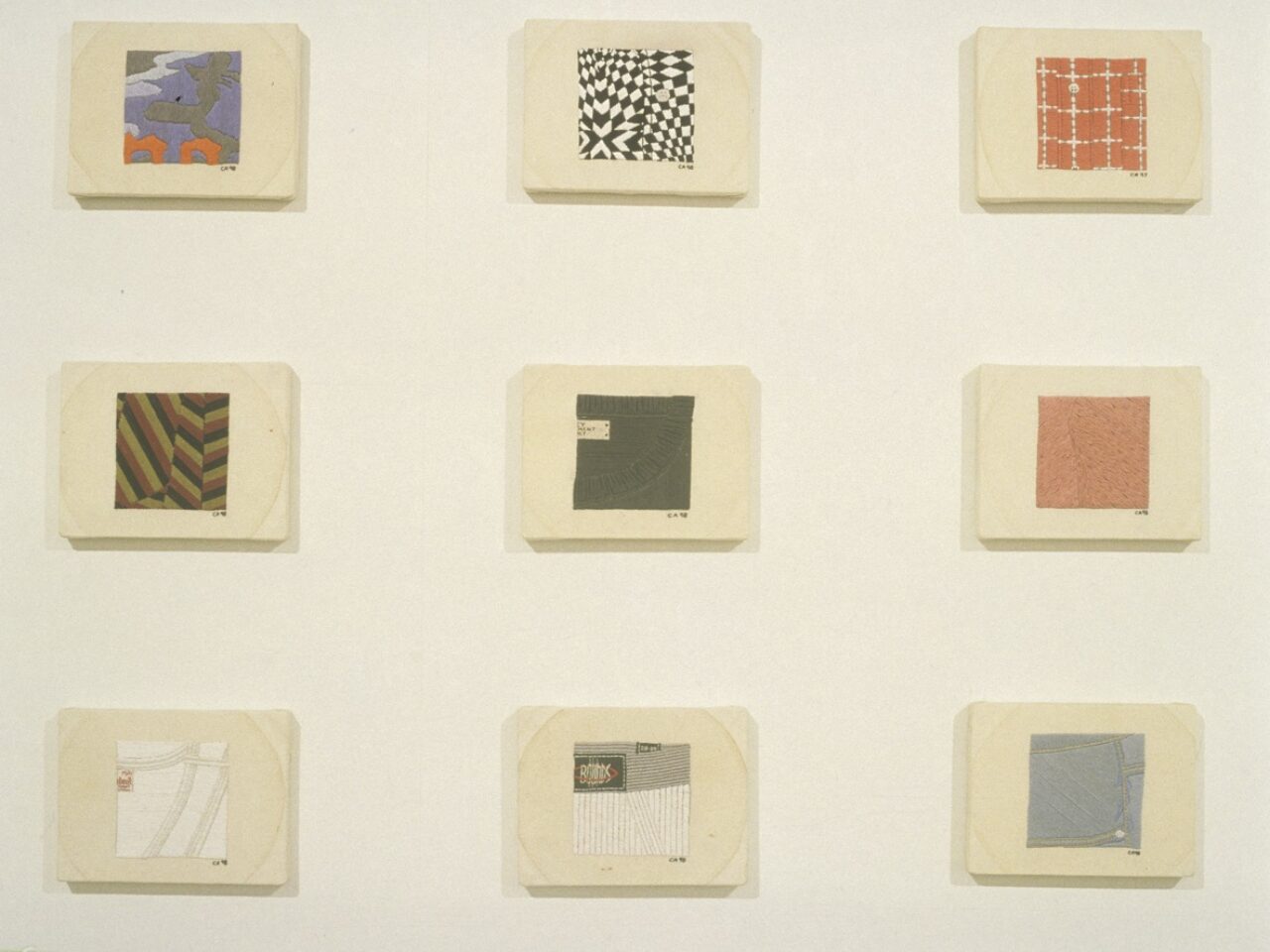Carlos Arias embroiders immaculate designs with tiny stitches, creating a visual repertoire of images related to the body.
1999 Biennial Year Find out more
The intimacy of the medium itself, with its suggestion of repetitive touch, lends a peculiar poignancy to these bodily associations.
Traditional folk decorations are also referenced, and one is inevitably reminded of the traditional labour of peasant women who can be seen today on the streets of Mexico City embroidering cloth for the tourist trade. Like these women – whose motifs are emblematic of Mexico’s indigenous cultures – Arias uses his medium as a kind of writing. As objects, his designs translate the silences of history into the language of embroidery.
In his earlier embroideries Arias represented the human body more directly, often using an x-ray view to ‘see inside’ his subject. Reminiscent of the imagery of Frida Kahlo, this device has its origins in Mexican surrealism. In other works like Autorretrato de Uso (Wearing Self-portrait) (1997-98) Arias represented the body at one remove by making detailed replicas of fragments of his own clothing. The version of Autorretrato de Uso (Wearing Self-portrait) for TRACE, included a set of 80 small, framed embroideries that hung in a tight grid 780 cm long.
Flanking these were two larger, relatively abstract enlargements of the fabric textures. The result was a composite self-portrait imaged through Arias’s personal effects: an intimate and ambiguous trace of the artist’s presence.
Autorretrato de Uso (Wearing Self-portrait), 1997-98
Cotton embroidery , 105 x 750 cm
Courtesy of Galeria OMR, Mexico City
Saco (Jacket), 1996-99
Cotton embroidery, 115 x 175 cm
Courtesy of Galeria OMR, Mexico City
Superficie, tela toja, (Red Fabric Surface), 1998-99
Cotton embroidery 100 x 100 cm
Courtesy of Galeria OMR, Mexico City

